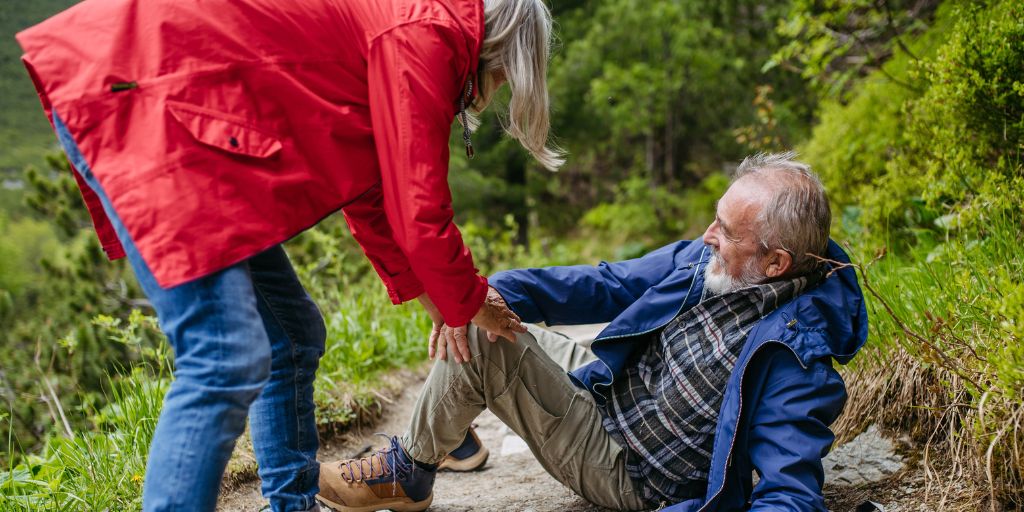
The older you are, the higher the chance of falling and the related problems. However, a lot of falls can be avoided. Engaging in activities such as working out, keeping track of medications, monitoring eyesight, securing the home and fall prevention devices can lower the chances of experiencing a fall. Even elderly individuals who do not frequently experience falls still worry about falling. This fear could cause them to refrain from engaging in activities such as walking or socializing. Nevertheless, remaining physically active is essential for sustaining good health and effectively reduces the risk of falling. Therefore, do not allow the fear of falling to impede your participation! Learn about reasons for falls and ways to avoid them to increase your comfort when participating in physical activities.
Ways to Reduce the Likelihood of Falling
Reach out to your medical provider
Make an appointment with your doctor to assess fall risks and prevention strategies. Important points for discussion include:
Drugs: Enumerate all medications, both prescribed and OTC, as well as supplements. Your healthcare provider will check for side effects and interactions, possibly changing medications that cause fatigue or impact cognitive function.
Previous incidents of falling: Document information about past falls, such as the surrounding situation and any close calls. These events provide information for customized prevention tactics.
Conditions affecting health: Talk about any issues with the eyes or ears that are affecting balance. Inform about any discomfort felt when walking, such as feelings of dizziness or numbness. Your healthcare provider will assess muscle strength, balance, and walking style in order to create a customized plan for prevention.
Keep Your Bones Strong
Maintaining strong bones doesn’t guarantee immunity from falls, yet robust bones can mitigate severe outcomes like hip fractures. Fractures can result in prolonged hospitalization, disability, or worse. Adequate intake of calcium and vitamin D promotes bone strength, as does regular physical activity, aiming for 150 minutes weekly.
Eye and ear care
Eyesight evolves with age, impacting depth perception and distance judgment, crucial for navigating stairs and curbs safely, potentially leading to falls among seniors.
Exercise caution with multifocal lenses such as bifocals or progressives, which may heighten fall risks by distorting depth perception due to the reading prescription at the lens bottom.
Additionally, older individuals exhibit increased glare sensitivity and require more illumination for nocturnal vision, necessitating tenfold more light than teenagers and experiencing prolonged adjustment to sudden light changes.
Hearing impairment also correlates with fall susceptibility, with research indicating a threefold higher risk for those with hearing loss compared to those without.
Regular vision and hearing assessments are imperative, along with adherence to prescribed glasses and hearing aids.
Declutter Your Living Space
Loose carpets, tangled cords, and messy spaces can pose dangers for seniors. Clearing out clutter and ensuring proper lighting can lower the chances of accidents. Taking steps like securing rugs and maintaining clear pathways can make homes safer for older adults.
Be winter ready
Frosty surfaces up your chances of slipping. Keep pathways, steps, and the driveway free of ice and snow. Opt for sturdy, low-heeled boots before stepping out. For cane users, attach a retractable ice pick for added stability. Carry a pouch of sand, grit, or cat litter to scatter on icy patches when necessary.
Make Bathrooms Safer
Bathrooms can be risky for slips, mainly because of their slippery surfaces. Adding grab bars and non-slip mats can greatly lower this risk, ensuring safety in the bathroom, particularly for seniors, by reducing hazards in wet areas.
What to do if you fall
Take your time before attempting to stand up, ensuring you’re not injured.
If you feel capable, maneuver onto your hands and knees and move towards stable furniture for support.
If standing is impossible, seek assistance. Utilize any emergency communication device or nearby phone.
Don’t allow fear of falling to hinder your activity. Inactivity heightens the risk of falls.
Remember, falls aren’t inevitable with age. If you detect changes in balance or mobility, consult your healthcare providers promptly. Prevention is preferable to dealing with fall-related health issues after the fact.












